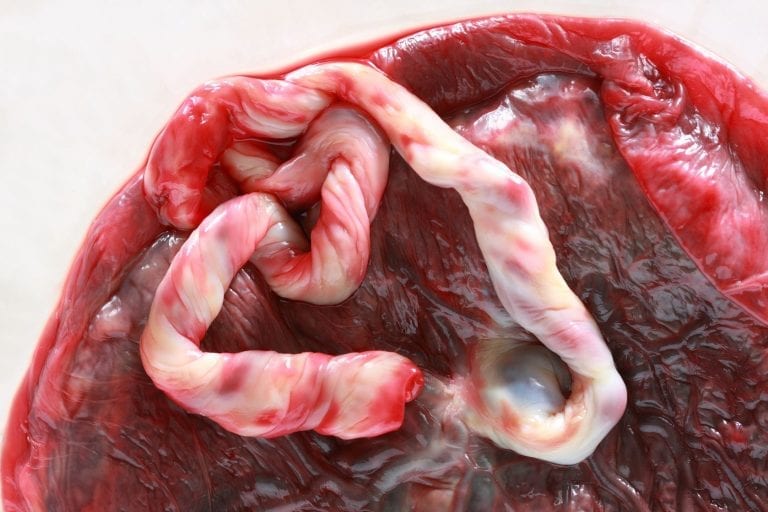Understanding Your Placenta
The placenta is an amazing organ that’s chiefly responsible for providing your baby with nutrition and oxygen while also removing waste from baby’s blood during pregnancy. Blood flow through your baby’s placenta and its attached umbilical cord are her lifelines.
Most moms will never have issues with baby’s placenta during pregnancy but serious conditions for both you and your baby could arise. The most common placenta problems are placenta previa and placental abruption, which is less common but can be life threatening. Both can cause bleeding in pregnancy and at birth.
If you begin bleeding more than 20 weeks into pregnancy, your healthcare provider will suspect placenta previa as this is when the uterus begins to stretch the most as it grows. Placenta previa happens when the placenta covers part or all of your cervix.
Placenta previa is measured in different degrees: marginal, partial or total. You may be told you have a “low-lying” placenta. Often seen on the 20-week ultrasound, a low-lying placenta may be near the cervical opening but not yet covering it. In most cases, this resolves on its own as the uterus grows and your placenta moves away from the cervix.
If you’re diagnosed with a placenta previa you may have multiple ultrasounds during pregnancy so that your healthcare provider can track the position and health of your placenta. These ultrasounds will also help determine whether you can birth your baby normally or need cesarean, such as with a total placenta previa. With a partial previa a vaginal or cesarean birth, your healthcare provider will discuss the risks of normal versus cesarean birth with you. Together, you will make the best decision for how your baby will be born—most women who experience placenta previa have an otherwise healthy pregnancy and birth.
Managing Placenta Previa
If you have placenta previa, your healthcare providers will likely ask you to avoid putting anything into your vagina, which means avoiding intercourse and vaginal exams during pregnancy. This is to reduce your risks of bleeding.
Complications you can experience in pregnancy if you have placenta previa include:
- anemia—if you have frequent episodes of bleeding
- intrauterine growth restriction (where your baby doesn’t grow as much as he/she should)
- early birth, particularly if your baby needs to be born early due to bleeding or growth issues, which may result in baby’s needing to receive care in the neonatal intensive care unit
If you have a complete placenta previa, or reoccurring bleeding, your healthcare provider may ask you to be on bedrest at home or in the hospital for an extended period of time. You may also need to receive blood if bleeding is excessive. Exactly what you will need to do will depend on the degree of the previa and the symptoms you are having.
Your nurse midwife or doctor will see you more frequently and continue to monitor the previa by ultrasound. For future pregnancies it will be important to tell your healthcare provider that you have had a past placenta previa, as this places you at risk for another.
Placental Abruption
A placental abruption can be a life-threatening problem for you and your baby. It happens when part or all of your placenta pulls away or separates from the wall of the uterus, often without warning.
Signs of placental abruption are dark or bright-red vaginal bleeding, abdominal pain, and your abdomen feeling tender and very hard to the touch (like a board) or sudden, rapid contractions.
Placental abruption is a medical emergency; get to a hospital immediately by calling 911 and alerting your midwife or doctor on the way. Depending on your symptoms, baby’s heart rate and the amount of bleeding, you may have an immediate ultrasound or the diagnosis may be made by your symptoms only.
Placental Abruption is an Emergency
With abruption, your baby will be delivered immediately by cesarean because once the placenta separates, your baby will no longer be receiving the oxygen and blood flow she needs to survive—no matter baby’s gestational age. In some situations a very small, isolated abruption may be discovered by ultrasound and not be an immediate risk to your pregnancy. When an abruption is diagnosed and cared for quickly, the outcomes can typically be good for both mom and baby. In this situation, the size of the abruption will be monitored by ultrasound, you will have more frequent office visits, and you will be instructed to watch for bleeding, cramping, back and abdominal pain. As with a placenta previa, it’s important that if you become pregnant again, you let your healthcare provider know of your history of placental abruption.
While both of these placental conditions sound, and can be, very frightening, you can be proactive in watching for signs of placenta problems—particularly if you’ve had a problem with a placenta in the past, so that you strive toward the healthy best pregnancy and birth for your baby.






Comments are closed.